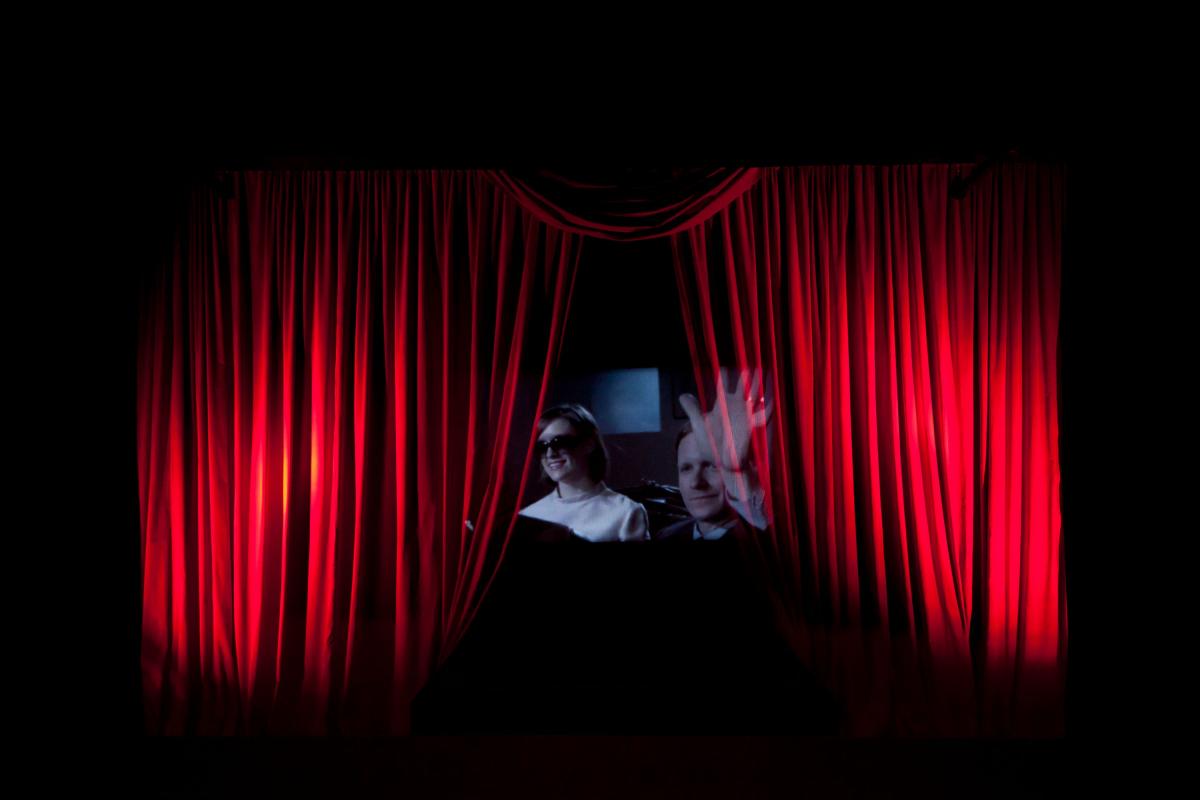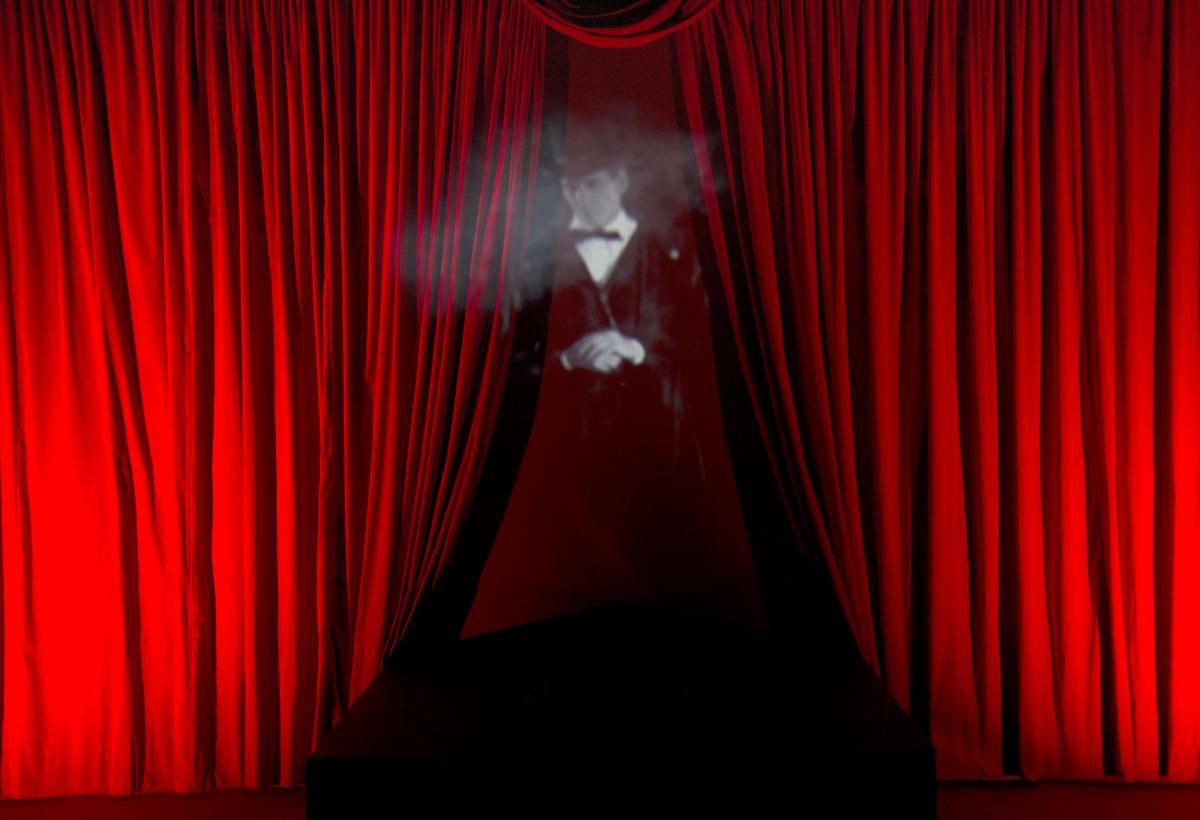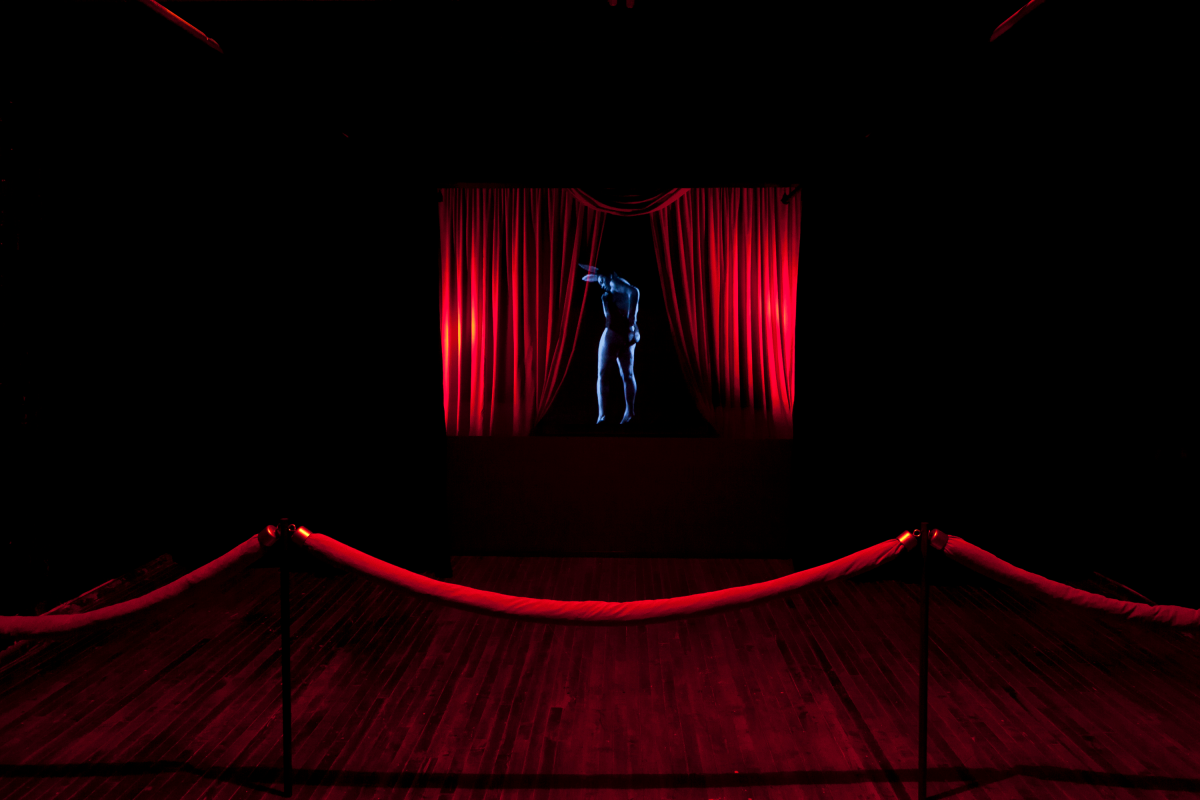
For four decades, Carrie Mae Weems has been an inspiring force in American art, using photography, text, textile, video, film, installation, public art, and performance to insist on the interplay between a shared but misrepresented past and our current challenging national dynamics. Described as an icon, national treasure, legend, and genius, she is also a moral compass in the field, entwining art and activism to address racism, sexism, classism, colonialism, and xenophobia. Yet, until now, SAAM has had no work by this central figure in its collection.
We are now in the process of addressing this oversight, with the acquisition of a major, room-scale artwork that touches on primary themes and multiple projects from across Weems’ career. Lincoln, Lonnie, and Me—A Story in 5 Parts is arguably her most complex multimedia installation to date and will be displayed in a specially designed black-box theater inside our existing galleries. Once inside this space, an eighteen-minute projection introduces viewers to ghosts of racialized and gendered performances past and present. Together, these vignettes trace an elusive journey through the American psyche.
Weems started her training as a performer, moving from Oregon to California to join the renowned San Francisco Dancers' Workshop. She took up photography in the mid-1970s, first in the context of political organizing and activism, and then increasingly as a tool for artistic expression. Lincoln, Lonnie and Me incorporates all these strategies, mixing immersive theatricality, Weems' herself performing on stage, and spectral videos, many of which were originally shot as part of politically-charged photography projects. The result is an installation that feels like a time portal within the museum, bringing to life references from across American art, history, and popular culture from the 1800s to the present.
After opening with a tuxedoed tap-dancer gliding across the stage to sounds of the Blues, the piece moves into longer sections that correspond to the three figures named in the artwork’s title. President Lincoln appears and fades into a fog, while Weems’ disembodied voice reads the Gettysburg Address. A re-enactment of President Kennedy’s assassination is seen between the curtains. The next passage pairs the voice of Weems’ regular collaborator, the artist and activist Lonnie Graham, speaking about the challenge of changing hearts and minds over footage of 1960s protests around busing boycotts.
As the third figure referenced in the title, Me, the artist herself appears in a variety of roles, first as a trickster growling about revenge, and then as a silhouetted Playboy bunny, tugging at a costume not made to fit. In this final section, accompanied by the song “Girl, You’ll Be a Woman Soon,” Weems sifts through a variety of female roles—from the pin-up to the artist’s nude model, from intense hip-hop dancers to a white woman gazing into a mirror—that suggest the constant demands of performing womanhood and its fraught intersections with race.
In addition to the richness of the video content, I am impressed by the perfect alignment between the gallery’s design, the subject matter, the overall artistic intention and the technological innovation Weems’ used to animate this setting. Weems’ installation teases out synergies between the nineteenth century variety theater setting, the political figures seen here, and the polarizations that echo from that time to ours, all while using a specific theatrical technique, Pepper’s Ghost, whose popularity in the US coincided with the Civil War and Reconstruction.
Patented in 1863, the technique combines the science of optics and the popularization of electrical lighting to deliver convincing ghosts or other apparitions for an audience’s delight. Using angled glass, mirrors and lights, a performer in a hidden chamber becomes visible as a transparent reflection on stage. In Weems’s version, the hidden chamber bounces a video projection off the floor onto an angled mylar sheet. Black masking at the front of the proscenium and velvet ropes several feet beyond that keep viewers at the distance needed for the illusion to work best. The results are magical and mysterious, even in the twenty-first century.
Lincoln, Lonnie, and Me is enticingly elegant and quietly unnerving. It is a remarkable feat by an artist at the height of her artistic powers. It will undoubtedly spark conversations with other contemporary works in SAAM’s collection and invite deep, complex engagement with the many chapters of US history that we are still wrestling with today.




















